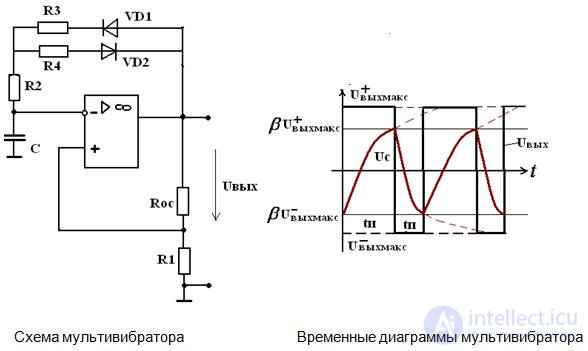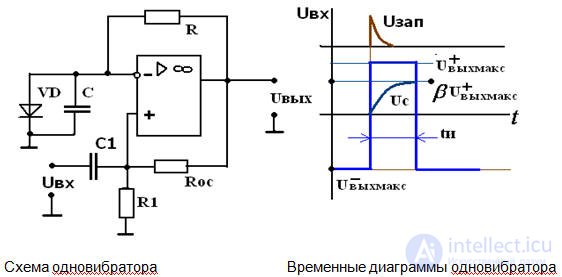Lecture
Multivibrators
In a multivibrator operating in the autocollection mode ***, there are continuously generated rectangular pulses at its output.
Any multivibrator, as a pulse generator, consists of an amplifier and RC circuits.
Symmetric Multivibrator
The pulse duration t and pause t p are equal.


The process of charging a capacitor is described by a differential equation:

The solution to this equation is:

If the process of charging the capacitor begins at time t2 and ends at time t3, then for this scheme the solution will be written as:
Let UC (ti) = β Uout max. Prologize this expression, we get:

If U + vyhmax = U-out max, then: t and = τ ∙ ln (1 + 2 R1 / Roc)
if ti = tp, then the multivibrator symmetrical in such a generator, the frequency of the coil *** is determined by the formula, where the period T = ti + tp

Single-ended multivibrator

An asymmetrical multivibrator is a generator of rectangular pulses, in which the pulse duration is not equal to the duration of the pause, i.e. t and ≠ tп.
tand = (R2 + R3) • C • ln (1 + 2 R1 / Roc)
tn = (R2 + R4) • C • ln (1 + 2 R1 / Roc),
moreover, R3 ≠ R4.
Odnovibrator
Multivibrator operating in standby mode, when a square pulse at the output appears only when a trigger pulse is applied to the enable input.


Comments
To leave a comment
Electronics, Microelectronics, Element Base
Terms: Electronics, Microelectronics, Element Base